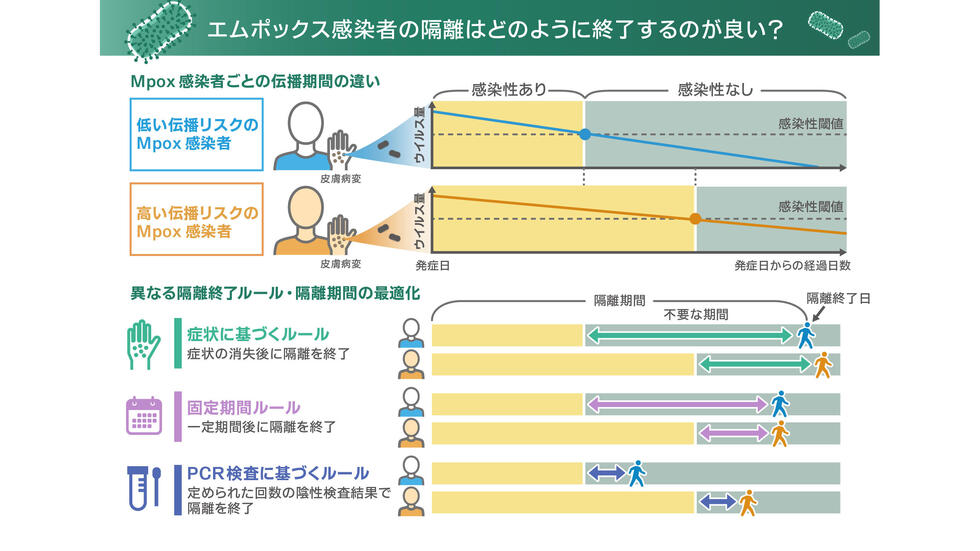2024-08-24 ワシントン大学セントルイス校
<関連情報>
- https://source.washu.edu/2024/08/turning-bacteria-into-bioplastic-factories/
- https://enviromicro-journals.onlinelibrary.wiley.com/doi/10.1111/1751-7915.14552
- https://journals.asm.org/doi/10.1128/aem.01438-24
光栄養性紫色非硫黄細菌Rhodomicrobium属はバイオプラスチック生産の新規シャーシである The phototrophic purple non-sulfur bacteria Rhodomicrobium spp. are novel chassis for bioplastic production
Eric M. Conners, Karthikeyan Rengasamy, Tahina Ranaivoarisoa, Arpita Bose
Microbial Biotechnology Published: 20 August 2024
DOI:https://doi.org/10.1111/1751-7915.14552
Graphical Abstract
The purple non-sulfur bacteria Rhodomicrobium vannielii and Rhodomicrobium udaipurense produce polyhydroxyalkanoate under various phototrophic growth conditions using N2 gas or ammonium chloride as nitrogen sources. This study adds to a growing body of literature exploring metabolically versatile microbes as biocatalysts for heterotrophic and autotrophic bioproduction.

Abstract
Petroleum-based plastics levy significant environmental and economic costs that can be alleviated with sustainably sourced, biodegradable, and bio-based polymers such as polyhydroxyalkanoates (PHAs). However, industrial-scale production of PHAs faces barriers stemming from insufficient product yields and high costs. To address these challenges, we must look beyond the current suite of microbes for PHA production and investigate non-model organisms with versatile metabolisms. In that vein, we assessed PHA production by the photosynthetic purple non-sulfur bacteria (PNSB) Rhodomicrobium vannielii and Rhodomicrobium udaipurense. We show that both species accumulate PHA across photo-heterotrophic, photo-hydrogenotrophic, photo-ferrotrophic, and photo-electrotrophic growth conditions, with either ammonium chloride (NH4Cl) or dinitrogen gas (N2) as nitrogen sources. Our data indicate that nitrogen source plays a significant role in dictating PHA synthesis, with N2 fixation promoting PHA production during photoheterotrophy and photoelectrotrophy but inhibiting production during photohydrogenotrophy and photoferrotrophy. We observed the highest PHA titres (up to 44.08 mg/L, or 43.61% cell dry weight) when cells were grown photoheterotrophically on sodium butyrate with N2, while production was at its lowest during photoelectrotrophy (as low as 0.04 mg/L, or 0.16% cell dry weight). We also find that photohydrogenotrophically grown cells supplemented with NH4Cl exhibit the highest electron yields – up to 58.89% – while photoheterotrophy demonstrated the lowest (0.27%–1.39%). Finally, we highlight superior electron conversion and PHA production compared to a related PNSB, Rhodopseudomonas palustris TIE-1. This study illustrates the value of studying non-model organisms like Rhodomicrobium for sustainable PHA production and indicates future directions for exploring PNSB metabolisms.
Rhodopseudomonas palustris TIE-1でRuBisCOフォームIおよびII遺伝子を過剰発現させると、ポリヒドロキシアルカノエート生産が従属栄養的および独立栄養的に増大することを発見 Overexpression of RuBisCO form I and II genes in Rhodopseudomonas palustris TIE-1 augments polyhydroxyalkanoate production heterotrophically and autotrophically
Tahina Onina Ranaivoarisoa, Wei Bai, Rengasamy Karthikeyan, Hope Steele, Miriam Silberman, Jennifer Olabode, Eric Conners, Brian Gallagher, Arpita Bose Published:20 August 2024
DOI:https://doi.org/10.1128/aem.01438-24

ABSTRACT
With the rising demand for sustainable renewable resources, microorganisms capable of producing bioproducts such as bioplastics are attractive. While many bioproduction systems are well-studied in model organisms, investigating non-model organisms is essential to expand the field and utilize metabolically versatile strains. This investigation centers on Rhodopseudomonas palustris TIE-1, a purple non-sulfur bacterium capable of producing bioplastics. To increase bioplastic production, genes encoding the putative regulatory protein PhaR and the depolymerase PhaZ of the polyhydroxyalkanoate (PHA) biosynthesis pathway were deleted. Genes associated with pathways that might compete with PHA production, specifically those linked to glycogen production and nitrogen fixation, were deleted. Additionally, RuBisCO form I and II genes were integrated into TIE-1’s genome by a phage integration system, developed in this study. Our results show that deletion of phaR increases PHA production when TIE-1 is grown photoheterotrophically with butyrate and ammonium chloride (NH4Cl). Mutants unable to produce glycogen or fix nitrogen show increased PHA production under photoautotrophic growth with hydrogen and NH4Cl. The most significant increase in PHA production was observed when RuBisCO form I and form I & II genes were overexpressed, five times under photoheterotrophy with butyrate, two times with hydrogen and NH4Cl, and two times under photoelectrotrophic growth with N2 . In summary, inserting copies of RuBisCO genes into the TIE-1 genome is a more effective strategy than deleting competing pathways to increase PHA production in TIE-1. The successful use of the phage integration system opens numerous opportunities for synthetic biology in TIE-1.


